Publisher's Synopsis
In wastewater reclamation systems, microbiological monitoring is conducted to ensure that the users of reclaimed water are exposed to minimal risks from exposure to pathogens. Typically, utilities rely on the use of process controls to remove or inactivate pathogens. Routine monitoring of indicator organisms is conducted to evaluate overall process performance and for regulatory compliance. However, the effectiveness of individual treatment processes for removal of pathogens is dependent on process variables. This project was conducted to compare the effectiveness of biological treatment, filtration, and disinfection for removal of bacterial and viral indicators, enteric viruses, and protozoan pathogens. Six full-scale treatment facilities were each sampled a minimum of four times over a one year period. The relative impacts of loading conditions, process design, and operating parameters on the removal/inactivation of a suite of nine microbial species (bacteria, coliphages, enteric viruses, and protozoan pathogens) was evaluated. Bacterial removal was consistent for all types of biological systems, however, increased virus removal was associated with biological nutrient removal and nitrification processes. Parasite removal was highly variable. The effectiveness of filtration was impacted most by the use of upstream chemicals (either chlorine or coagulant chemicals). Chlorine disinfection was more effective in cases where ammonia levels were low (biological nutrient removal or nitrification facilities). Infectivity assays for protozoan pathogens suggest that the proportion of infective cysts or oocysts increases with increasing level of treatment.









